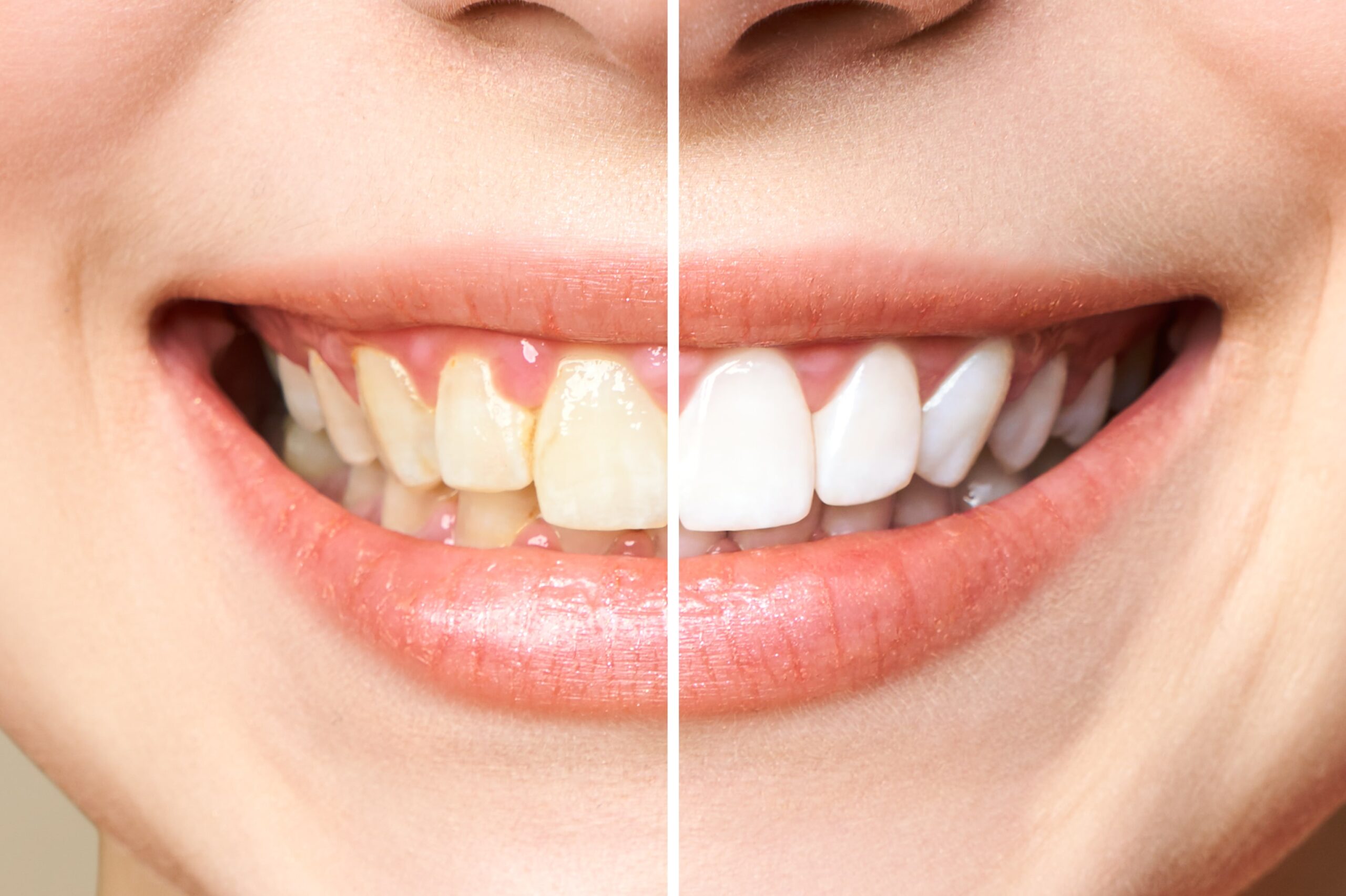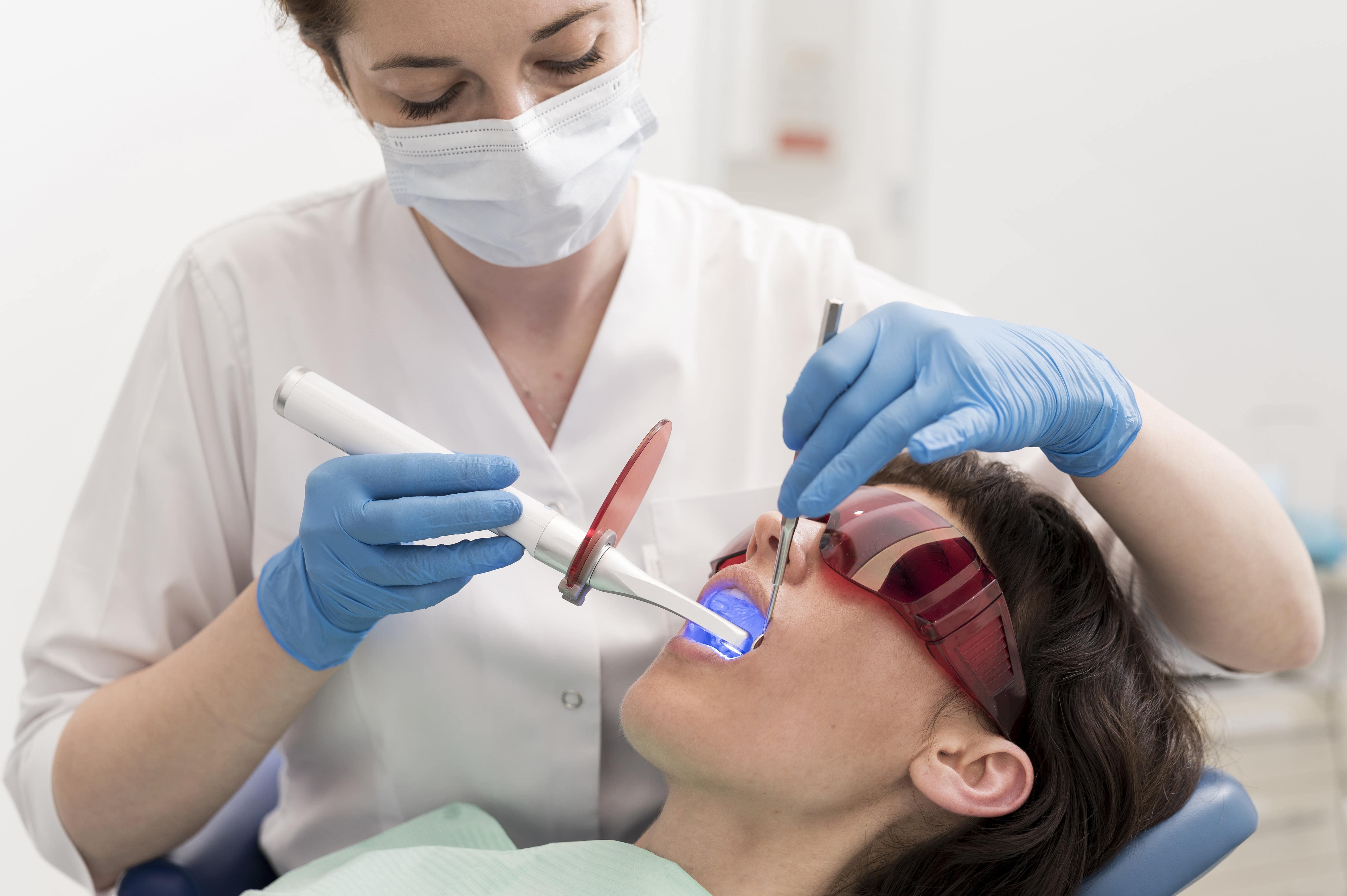A Comprehensive Guide
An in-depth look at tooth whitening, including the process, various methods, benefits and risks, professional vs. at-home methods, and tips for maintaining whiter teeth.

Tooth Whitening: An In-Depth Look
Understanding the Tooth Whitening Process
Tooth whitening is a procedure aimed at lightening the natural color of teeth without removing any of the tooth surface. The procedure involves the use of peroxide-based bleaching agents that come in varied concentrations. At-home systems usually contain 3% to 20% peroxide while in-office systems contain 15% to 43% peroxide. For example, a typical at-home tooth bleaching kit will contain a lower concentration of peroxide, making it safe for use without professional supervision.
There are different methods of tooth whitening, including treatments at the dentist’s office, over-the-counter kits, whitening toothpastes, gels, rinses, and strips. Each method has its own unique mechanism, but they all aim to remove extrinsic and intrinsic stains that result from environmental factors like tobacco use or pigmented foods.

Various Methods for Tooth Whitening
Professional bleaching is the most common method of tooth whitening, and the active ingredient in tooth whitening products is usually hydrogen peroxide or carbamide peroxide. Over-the-counter whitening strips and gels are thin strips or clear gels coated with a peroxide-based whitening gel, while whitening rinses can take up to 12 weeks to show results [3].
Laser whitening is a procedure that uses a light or laser to activate the bleaching product, making teeth up to five or six shades lighter. Tray-based tooth whitening systems involve filling a mouth guard-like tray with a gel whitening solution. The total treatment can usually be done within three to four weeks, and the cost of tooth whitening varies, with laser or power whitening being more expensive than professional bleaching.
Benefits and Risks of Tooth Whitening
The benefits of tooth whitening include aesthetic improvements and increased confidence. For instance, having a brighter smile can significantly boost a person’s self-esteem and make them feel more confident in social situations. However, the procedure also carries certain risks and side effects. These may include tooth sensitivity, gum discomfort, sore throat, and white patches on the gum line [2].
Studies have shown that teeth whitening products do not damage dental restorations or a tooth’s nerve, and the effects of whitening are thought to last up to three years, varying from person to person. However, adverse effects of tooth whitening include tooth sensitivity and gingival irritation, and it is important to consider the individual characteristics that can influence the success of the treatment.
Professional Teeth Whitening Vs. At-Home Methods
In-office bleaching provides the quickest way to whiten teeth, but it is the most expensive, whereas at-home systems are cost-effective alternatives with varying concentrations of peroxide. Before trying at-home tooth-bleaching kits, it’s important to talk to your dentist, as not everyone will see good results, and certain dental work may not be affected by the bleaching process.
Over-the-counter whitening products like toothpastes and strips rely on peroxide to bleach teeth, and they are among the newest whitening products available. The American Dental Association supports educating the public on the need to consult with a licensed dentist for tooth whitening, emphasizing the importance of professional guidance.

Tips for Maintaining Whiter Teeth
After tooth whitening, it is important to cut down on food and drinks that can stain teeth, brush teeth regularly, and visit the dental team as recommended. Whitening may not be recommended for children under 16, pregnant or lactating women, individuals with sensitive teeth and allergies, gum disease, worn enamel, cavities, and exposed roots, and those with numerous restorations, indicating the importance of considering individual circumstances before undergoing whitening procedures.
Only licensed dentists or their supervised dental auxiliaries should make impressions for appliances used with tooth whitening products, emphasizing the need for professional oversight in tooth whitening processes. In the end, the importance of consulting with a dentist before and after tooth whitening is crucial for ensuring the best outcomes and minimizing potential risks [1].
